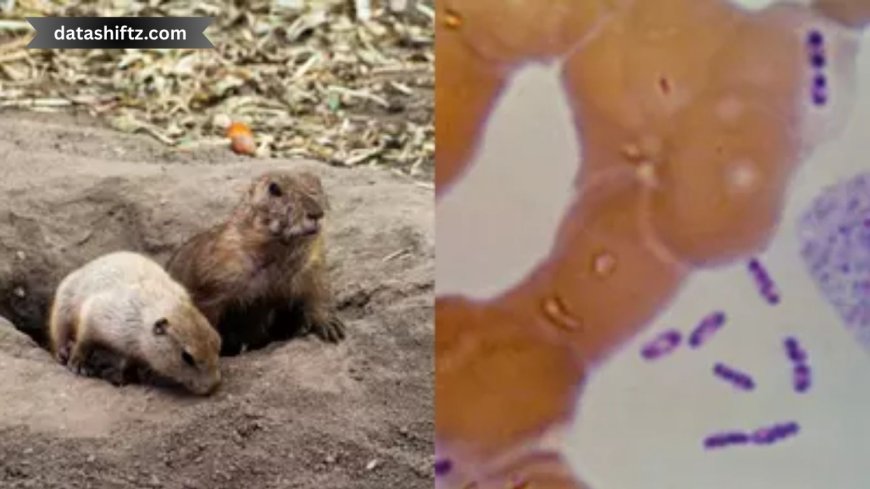The Bubonic Plague in 2025: What’s Happening Now?

Humanity may associate the bubonic plague with medieval catastrophes like the Black Death, but this ancient threat still appears today—albeit rarely and usually in remote areas. Let's explore recent cases, what modern science tells us, and how to stay informed and safe.
A Modern Case – Northern Arizona Outbreak
In mid-July 2025, public health officials confirmed a fatal pneumonic plague case in Coconino County, near Flagstaff, Arizona. According to the Arizona Department of Health Services and local hospitals, the patient—a resident of northern Arizona—was rushed into Flagstaff Medical Center ER with severe respiratory symptoms and died on the same day despite aggressive treatment.
This was the first pneumonic plague death in that area since 2007. Pneumonic plague is the deadliest and most contagious form—it affects the lungs and can transmit between people via respiratory droplets.
Bubonic vs. Pneumonic Plague
| Feature | Bubonic Plague | Pneumonic Plague |
|---|---|---|
| Primary symptoms | Fever, chills, swollen lymph nodes (“buboes”) | High fever, chest pain, bloody cough |
| Transmission route | Flea bites or contact with infected rodents | Respiratory droplets (person-to-person) |
| Contagiousness | Rarely contagious humans | High—via inhalation |
| Untreated fatality | 30–60 % | Nearly 100 % |
| Treated fatality | < 10 % with antibiotics | < 15 % with rapid antibiotic treatment |
Understanding the Bigger Picture
How common is plague today?
-
In the United States, averaging around 7 reported cases per year, mostly bubonic, and primarily in rural parts of the western states (Arizona, New Mexico, Colorado, California, Oregon, Nevada).
-
Globally, the WHO estimates 600–700 human cases annually, largely in Africa, Central Asia, and parts of South America. Countries like the Democratic Republic of Congo, Madagascar, and Peru are persistent hotspots.
Why does plague persist?
-
Plague is zoonotic: Yersinia pestis lives in wild rodents (prairie dogs, rats, squirrels) and their fleas.
-
These natural reservoirs mean elimination is nearly impossible—the disease reemerges from animal populations .
-
Antibiotic resistance is a potential threat (a resistant strain was found in Madagascar in 1995).
Today’s Facts
-
Rare but real – plague remains present globally and in parts of the U.S.
-
Pneumonic form is most dangerous, and Arizona’s recent death was of this kind.
-
Prompt antibiotics save lives—fatality rates drop to under 10% when treatment begins within 24 hours .
-
Public health measures—surveillance of rodent die-offs (like prairie dogs), flea control, and awareness campaigns are ongoing.
-
No widespread human-to-human spread so far in the current U.S. case, but vigilance is essential .
Keep Calm, Stay Safe: Expert Tips
-
Avoid wild rodents and their burrows, especially if you live or camp near places like Flagstaff or rural western areas.
-
Use insect repellents (DEET) and treat pets for fleas, especially outdoor cats.
-
Report and leave dead rodents alone—prairie dog die-offs can be red flags for plague presence.
-
Seek immediate medical care if you notice plague symptoms: fever, chills, swollen glands, or sudden severe cough with bloody mucus.
What’s Being Done Globally
-
The WHO EPI-WIN webinar on July 23, 2025, will present strategies for plague control, diagnostics, and antibiotic trials.
-
In endemic regions like Madagascar, ongoing vaccine research and antibiotic stewardship are priorities.
-
Continuous monitoring by the CDC and local health departments ensures rapid containment of outbreaks in the U.S.
Conclusion
Although plague still exists, modern medicine and public health systems keep it in check. The fatal pneumonic case in Arizona is a stark reminder—but also evidence of effective detection and response systems.
By staying informed, remaining cautious around wildlife, and seeking prompt treatment when symptoms arise, it’s possible to navigate this ancient threat safely in the 21st century.






























